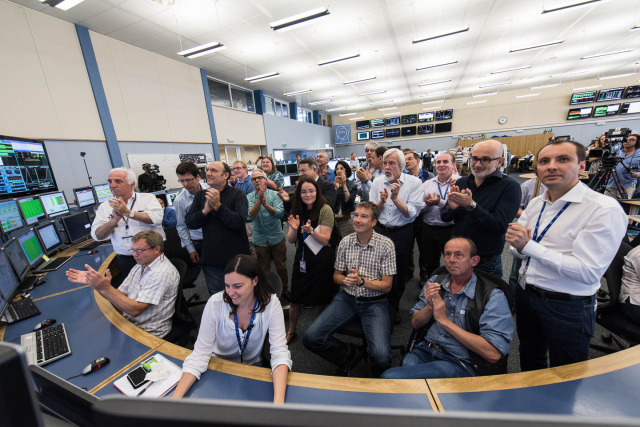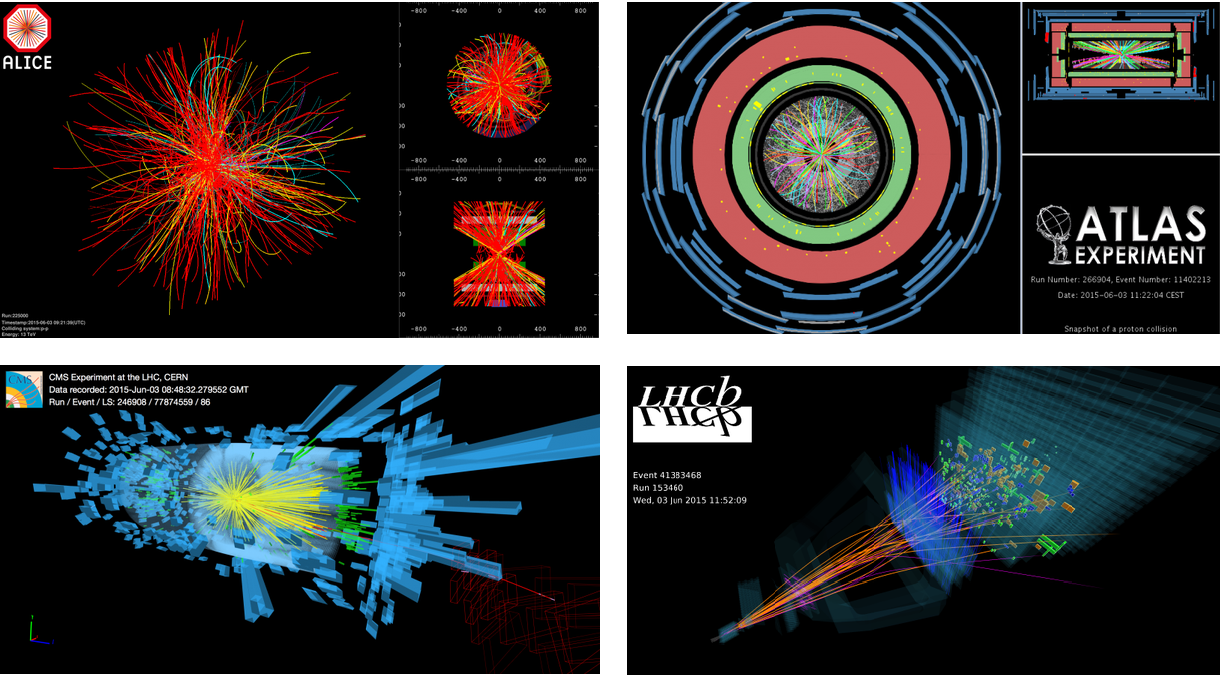
Celebrating the first LHC collisions
by Alexandra Welsch (UNILIV)
 Scenes in the CERN Control Centre (CCC) as stable beams at an energy of 6.5 TeV mark the start of run2 physics at the LHC. Image credit: CERN
Scenes in the CERN Control Centre (CCC) as stable beams at an energy of 6.5 TeV mark the start of run2 physics at the LHC. Image credit: CERNOn Wednesday, 3rd June, 10.40 am, the LHC operators declared "stable beams" at 6.5 TeV, the signal for the LHC experiments that they can start taking data for the first time in 27 months, after an almost two year shutdown and an intense eight weeks of beam commissioning. This marks the official start of Run 2 physics at the LHC and the start of a new adventure.
The LHC was filled with 6 bunches each containing around 100 billion protons. This rate will be progressively increased as the run goes on to 2808 bunches per beam, allowing the LHC to produce up to 1 billion collisions per second.

Collisions seen within the ALICE, ATLAS, CMS and LHCb detectors
Image credit: CERN
The world’s most powerful accelerator is now providing collisions at the record energy of 13 TeV, almost double the collision energy of its first run. This new energy frontier will allow researchers to probe new boundaries in our understanding of the fundamental structure of matter.
"For the LHC and its detectors to work, everything has to work. And that means I take my hat off to everyone." says CERN Director-General Rolf Heuer." What comes next will, without a doubt, change the way we see the Universe we live in.”
Read more >>
